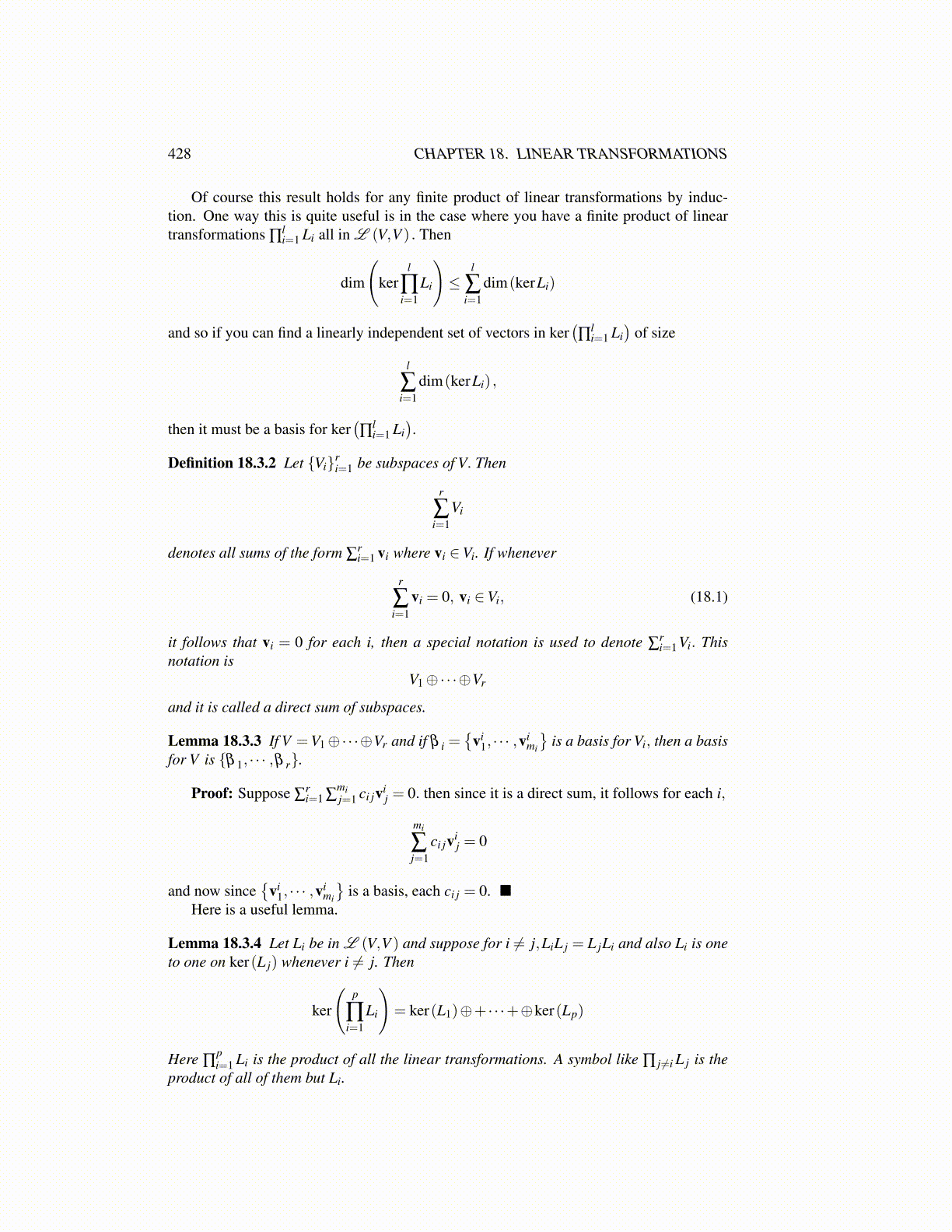
428 CHAPTER 18. LINEAR TRANSFORMATIONS
Of course this result holds for any finite product of linear transformations by induc-tion. One way this is quite useful is in the case where you have a finite product of lineartransformations ∏
li=1 Li all in L (V,V ) . Then
dim
(ker
l
∏i=1
Li
)≤
l
∑i=1
dim(kerLi)
and so if you can find a linearly independent set of vectors in ker(∏
li=1 Li
)of size
l
∑i=1
dim(kerLi) ,
then it must be a basis for ker(∏
li=1 Li
).
Definition 18.3.2 Let {Vi}ri=1 be subspaces of V. Then
r
∑i=1
Vi
denotes all sums of the form ∑ri=1 vi where vi ∈Vi. If whenever
r
∑i=1
vi = 0, vi ∈Vi, (18.1)
it follows that vi = 0 for each i, then a special notation is used to denote ∑ri=1 Vi. This
notation isV1⊕·· ·⊕Vr
and it is called a direct sum of subspaces.
Lemma 18.3.3 If V =V1⊕·· ·⊕Vr and if β i ={
vi1, · · · ,vi
mi
}is a basis for Vi, then a basis
for V is {β 1, · · · ,β r}.
Proof: Suppose ∑ri=1 ∑
mij=1 ci jvi
j = 0. then since it is a direct sum, it follows for each i,
mi
∑j=1
ci jvij = 0
and now since{
vi1, · · · ,vi
mi
}is a basis, each ci j = 0. ■
Here is a useful lemma.
Lemma 18.3.4 Let Li be in L (V,V ) and suppose for i ̸= j,LiL j = L jLi and also Li is oneto one on ker(L j) whenever i ̸= j. Then
ker
(p
∏i=1
Li
)= ker(L1)⊕+ · · ·+⊕ker(Lp)
Here ∏pi=1 Li is the product of all the linear transformations. A symbol like ∏ j ̸=i L j is the
product of all of them but Li.